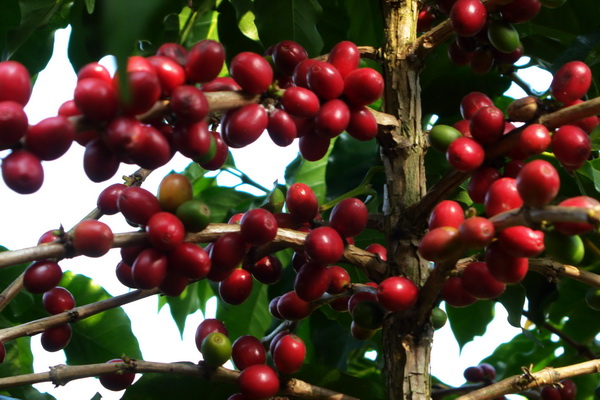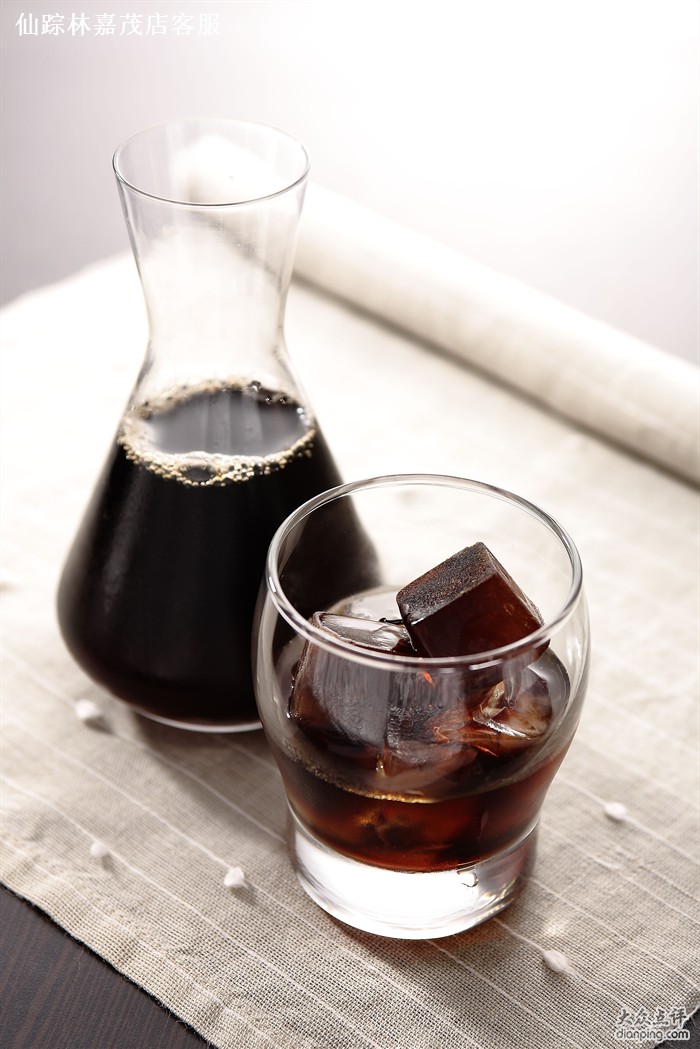The popularity of coffee common sense coffee beans coffee tree round beans (round beans) peaberry coffee berries
Coffee tree belongs to Rubiaceae of Rubiaceae, which is a shrub or small tree. It is native to subtropical Africa or Asia. The seeds in its berries are the main raw materials of coffee. Commercially, the seeds of coffee are called coffee beans (coffee bean).
There are many different species of coffee (Coffea) in this genus, about 25-40 species, of which Coffea Arabica and Robusta Coffea Robusta are widely cultivated, and the main producing areas include Central and South America, Southeast Asia and Africa. Among the many species, Coffea arabica is considered to be one of the best quality of all species. It accounts for about 75% of world trade.
Coffee grows on trees.
The flowers of a coffee tree
Secondly, the core (seed) of the fruit of the coffee tree is what we call the prototype of the raw coffee bean.
Coffee grows on trees.
Coffee berries
Coffee grows on trees.
There are two coffee seeds under the pulp of the berries. These are the coffee beans of our future.
Coffee grows on trees.
In general, coffee, a coffee berry contains two coffee seeds.
Coffee grows on trees.
Coffee grows on trees.
The cut of coffee berries
Coffee grows on trees.
The components of coffee berries
Another kind of coffee fruit, round bean (round bean) peaberry
Usually there are two seeds in a coffee fruit, known as coffee beans, but in the fruit of a coffee tree, there is usually only one seed in about 5-10% of the berries, because there is only one ovule fertilized in the ovary. The only bean will grow into a nearly oval shape. The other ovule cannot develop into a seed and becomes a flattened shape. The coffee beans in this kind of peaberry are smaller than the normal Arabica coffee beans, and the taste is obviously different from the general coffee beans, especially the peaberry beans will have strong acidity.
Generally speaking, the round beans will be divided into another category when the sorting operation is carried out after harvest. In the past, these peaberris may only be enjoyed by local farmers or finally discarded, because peaberry has always been regarded as a poor coffee fruit. Recently, because it has attracted the attention of some importing countries, some brands of coffee have begun to produce the so-called peaberry coffee. Some people think that it is the best coffee.

Important Notice :
前街咖啡 FrontStreet Coffee has moved to new addredd:
FrontStreet Coffee Address: 315,Donghua East Road,GuangZhou
Tel:020 38364473
- Prev

Starbucks item (Starbucks Brewed Coffee) Starbucks item tastes good? premium coffee
Coffee has three 15s, if it exceeds these three 15s, coffee can no longer be used: 1, raw coffee beans, aged no more than 15 months; 2, coffee cooked beans, sealed for no more than 15 days; 3, coffee powder, stored for no more than 15 minutes. These do sound a little harsh, and you don't have to drink coffee according to these three 15's, some special coffee beans, such as old Manning.
- Next

Coffee cup tester's manual cup test what is the coffee book in Taiwan? what are the professional coffee books?
Coffee books in China have always been a weakness. There are almost no professional books on coffee. The so-called coffee books are just a few scrubbing balls or simply reprint some coffee books from Taiwan. Taiwan is relatively rich in coffee books, and I have also collected some, but it still feels very limited, so I look for coffee in a wider range.
Related
- Beginners will see the "Coffee pull flower" guide!
- What is the difference between ice blog purified milk and ordinary milk coffee?
- Why is the Philippines the largest producer of crops in Liberia?
- For coffee extraction, should the fine powder be retained?
- How does extracted espresso fill pressed powder? How much strength does it take to press the powder?
- How to make jasmine cold extract coffee? Is the jasmine + latte good?
- Will this little toy really make the coffee taste better? How does Lily Drip affect coffee extraction?
- Will the action of slapping the filter cup also affect coffee extraction?
- What's the difference between powder-to-water ratio and powder-to-liquid ratio?
- What is the Ethiopian local species? What does it have to do with Heirloom native species?

